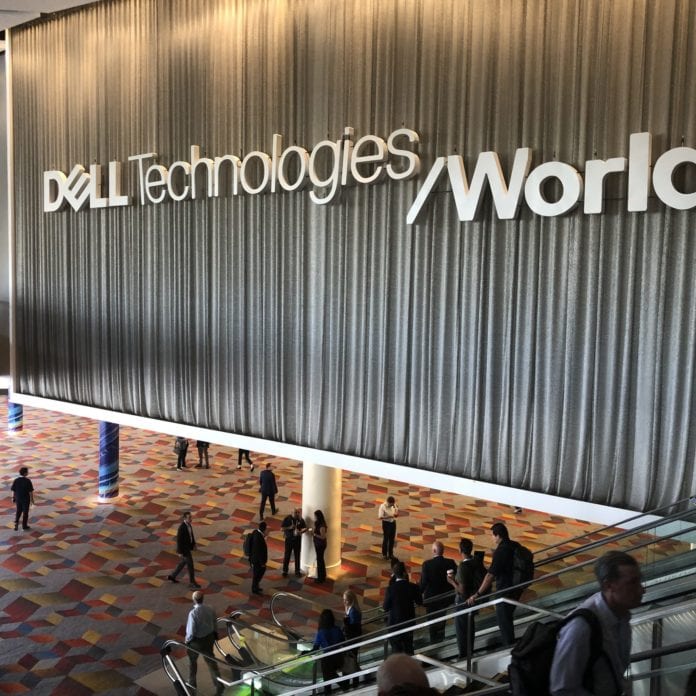Product announcements from Dell Technologies World
Dell Technologies has been telling the “hybrid, multi-cloud” story for some time and this year, at the company’s flagship event in Las Vegas, reiterated that messaging and layered end the need for an IT modernization strategy that considers the edge, core and cloud.
For enterprises and service providers, hyperscale-type agility has been present in data centers and public/private clouds for some time. Now the network edge, however that’s defined, is the latest frontier for cloud.
Edge
Enterprise and consumer data usage is showing no signs of slowing down while 5G connectivity to support an explosion of internet of things devices are poised to supercharge the need for data transport, processing and storage. To support new 5G and IoT use cases, compute functions typically associated with a centralized data center have to move closer to the edge.
Executives from Dell and Dell EMC gave their takes on what constitutes the edge and what that means for Dell Technologies.
Sam Burd, president of Dell’s Client Solutions Group, said, “The edge is broad. I would call us on the far-edge when you and look at what we’re doing with client.” He explained that a truly engaged, productive workforce needs more than snacks and drinks; it needs cutting-edge, appealing tech.
“I think about the edge and all the transformation discussion we’ve had,” Burd said, and “to me the thing that’s cool about the stuff that we’re doing in PC space–it’s kind of the hidden advantage companies can have.”
To that end, the company announced an update to its Latitude line of mobile PCs, now in its 10th generation, including features like faster battery charging, enhanced biometric security, longer battery life and easy management for IT departments via hardware optimization for Unified Workspace.
Also announced at the annual event, Unified Workspace is billed as simplifying device lifecycle management, using automation to free up IT workers to focus on more meaningful projects than manning the helpdesk.
This simplification is key, Burd said noting the challenges and costs of PC planning, deployment support and management. To solve that problem and still put great tech in employees’ hands, you have to put “intelligence and automation” into the process. “We did that with Unified Workspace.”
Dell EMC SVP and GM of Networking, Service Provider and Enterprise Infrastructure Tom Burns said, regardless of how edge is defined, it will require a new type of networking.
“A lot of people think the edge is a product or is a place. The edge includes the connected people that are part of our companies and our environments. It’s [also] a multitude of locations and projects depending on what you’re trying to connect, how you connect. Traditional networking is not going to work. We think of the edge as a few things we announced today,” he said, calling out Dell EMC’s SD-WAN Edge powered by VMware. The new platform bundles VMware SD-WAN with VeloCloud software with Dell EMC hardware.
Core
The core portion of the story was led by updates to the Dell EMC Unity storage product and the company’s PowerProtect software platform for data protection.
Jeff Clarke, vice chairman of products and operations at Dell Technologies, said the ability to capitalize on data “will determine the winners and losers in the digital economy. To deepen the value of traditional IT assets–while also creating new opportunities and efficiencies–many organizations today are looking to modernize their IT infrastructure as a critical step to become more digital.”
The latest Dell EMC Unity XT is two-times faster than its predecessor; it’s compatible with public clouds as well as the Dell Technologies Cloud, which was also announced during Dell Technologies World.
PowerProtect is available with SaaS-based management and self-service functionality. Beth Phalen, president of data protection, said customer want more automation and that’s what the new product is going for.
Cloud
Also launched at the event was Dell Technologies Cloud, designed to provide a “consistent operating model for hybrid cloud, reducing complexity of managing multiple clouds.” The company touted a 47% reduction in TCO compared to a native public cloud.
“Our hybrid cloud strategy is fundamentally based on what we’ve been hearing from our customers,” VMware SVP/GM of Cloud Platform Mark Lohmeyer said. “They want flexibility. They also want to ensure for the IT teams…they’ve got a consistent operational model, consistent infrastructure. We’re really uniquely positioned to deliver that holistic solution to our customers.”
Michelle Bailey of IDC said enterprises need multi-cloud but also need to simplify management of that environment. “While the goal is to simplify IT, operating in many cloud environments ends up consuming time and adding complexity. By enabling consistent operations and infrastructure…the combined Dell Technologies Cloud approach can help alleviate much of the burden on organizations by delivering a seamless experience.”

